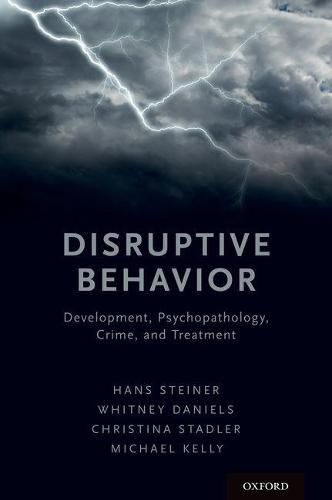Readings Newsletter
Become a Readings Member to make your shopping experience even easier.
Sign in or sign up for free!
You’re not far away from qualifying for FREE standard shipping within Australia
You’ve qualified for FREE standard shipping within Australia
The cart is loading…






Disruptive behavior is extremely common in normal and clinical populations. This book addresses its development, the newly grouped diagnoses associated with it and their bio-psycho-social causes and treatment. The past decade has seen a great deal of progress in the psychiatric and psychological literature, which has greatly advanced our understanding of these disorders. The book discusses state of the art studies of taxonomy, epidemiology, etiology, and treatment. Each chapter concludes with a thorough discussion of the clinical implications of this new information, exemplified by real case material. A whole chapter is devoted to the forensic implications of this important grouping of disorders. The chapter begins with a discussion of the exemplary cases in the legal literature, providing the clinician and the expert with a concise briefing of the legal underpinnings of these disorders which in essence seek to bring the world of medicine to the world of crime. The final chapter provides a concise summary of all preceeding chapter, summarizing what we have learned and showing the way into the future in terms of basic research, translational research and clinical practice. Sources and resources are provided for clinicians, researchers, teacher, primary care physicians, criminologists, forensic experts and interested lay people.
$9.00 standard shipping within Australia
FREE standard shipping within Australia for orders over $100.00
Express & International shipping calculated at checkout
Disruptive behavior is extremely common in normal and clinical populations. This book addresses its development, the newly grouped diagnoses associated with it and their bio-psycho-social causes and treatment. The past decade has seen a great deal of progress in the psychiatric and psychological literature, which has greatly advanced our understanding of these disorders. The book discusses state of the art studies of taxonomy, epidemiology, etiology, and treatment. Each chapter concludes with a thorough discussion of the clinical implications of this new information, exemplified by real case material. A whole chapter is devoted to the forensic implications of this important grouping of disorders. The chapter begins with a discussion of the exemplary cases in the legal literature, providing the clinician and the expert with a concise briefing of the legal underpinnings of these disorders which in essence seek to bring the world of medicine to the world of crime. The final chapter provides a concise summary of all preceeding chapter, summarizing what we have learned and showing the way into the future in terms of basic research, translational research and clinical practice. Sources and resources are provided for clinicians, researchers, teacher, primary care physicians, criminologists, forensic experts and interested lay people.